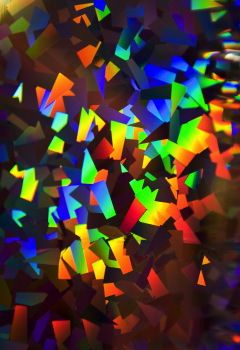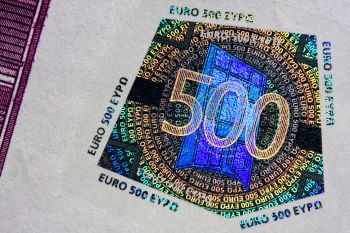A page from the "Causes of Color" exhibit...
Practical applications of interference effects

Holograms are ubiquitous, with uses ranging from adding security to currency and credit or debit cards, to decorative wrapping paper. The ability to record a three-dimensional image has also been utilized in art, architecture, educational displays, and portraiture.
Holograms
Although we regularly see holograms on our credit cards, our drivers’ licenses, and our currency, surrealist Salvador Dali was among the first to incorporate holograms into fine art. The ability of holograms to play with light and create a transparent yet realistic three-dimensional world is both inviting and intriguing.
Holograms are images that allow us to reproduce the three-dimensional aspects of an object. Instead of capturing an image directly onto film as a photograph does, a hologram records an interference pattern. Transmission holograms are viewed by shining a light through the recorded hologram, while reflection holograms create an image by reflecting light from their surface. Large-scale transmission holograms are able to create an image that appears to have depth, and that changes as you move, allowing you to see around the object projected.
To record a hologram, monochromatic, coherent laser light is split into two beams. The reference beam is directed to the holographic film, while the object beam shines onto the object and is reflected onto the film. The film is exposed to an interference pattern as the two beams recombine.





